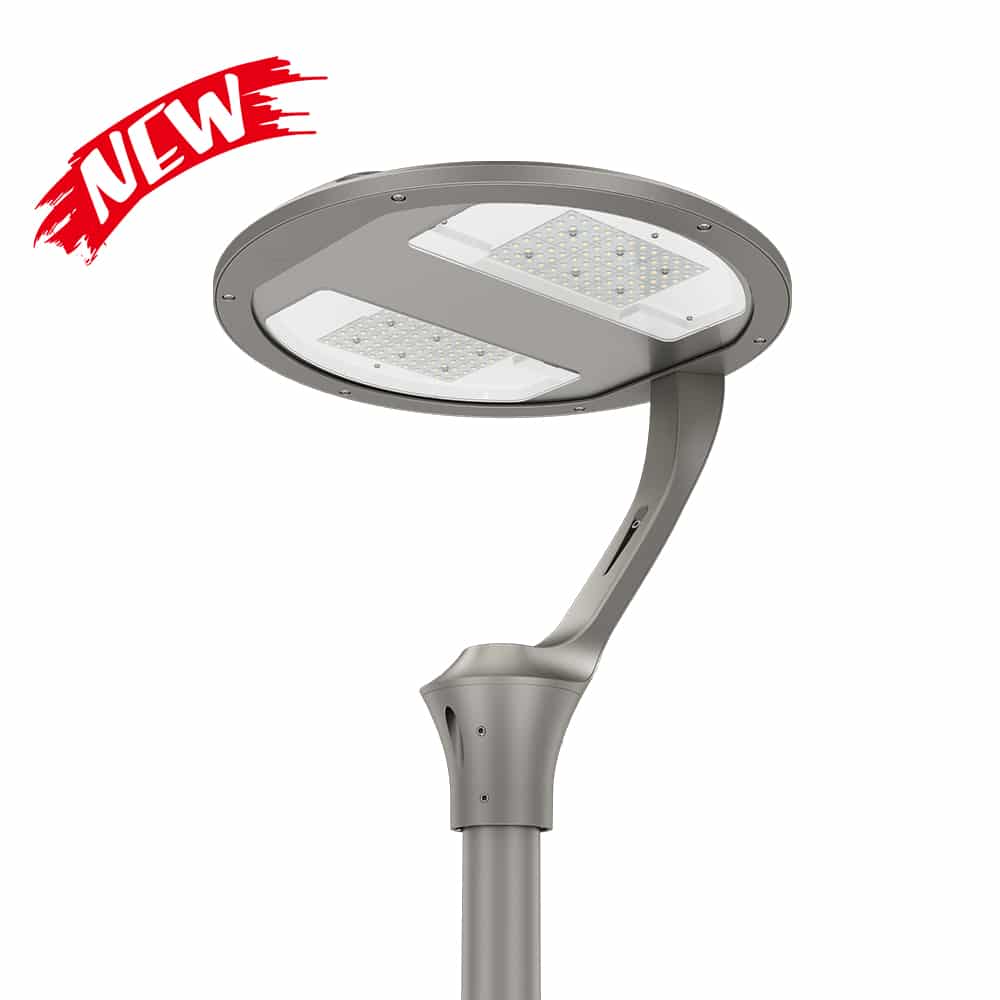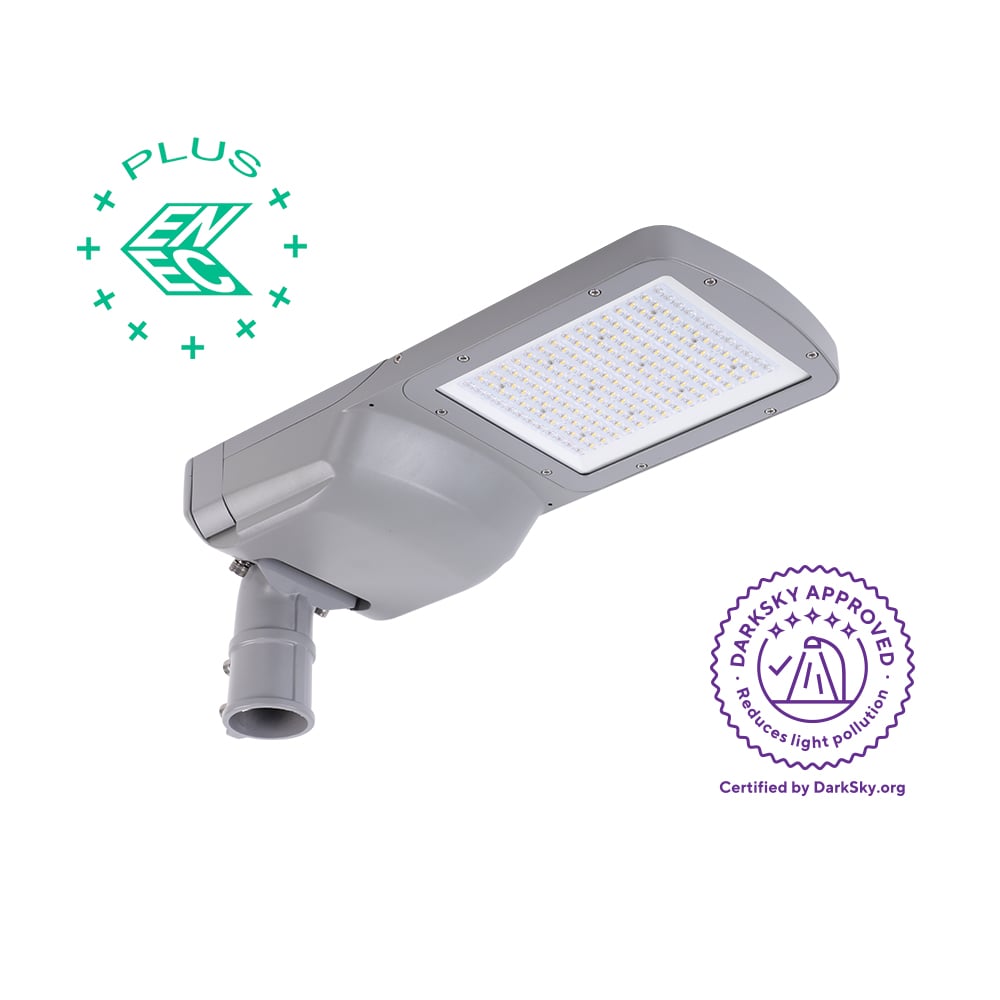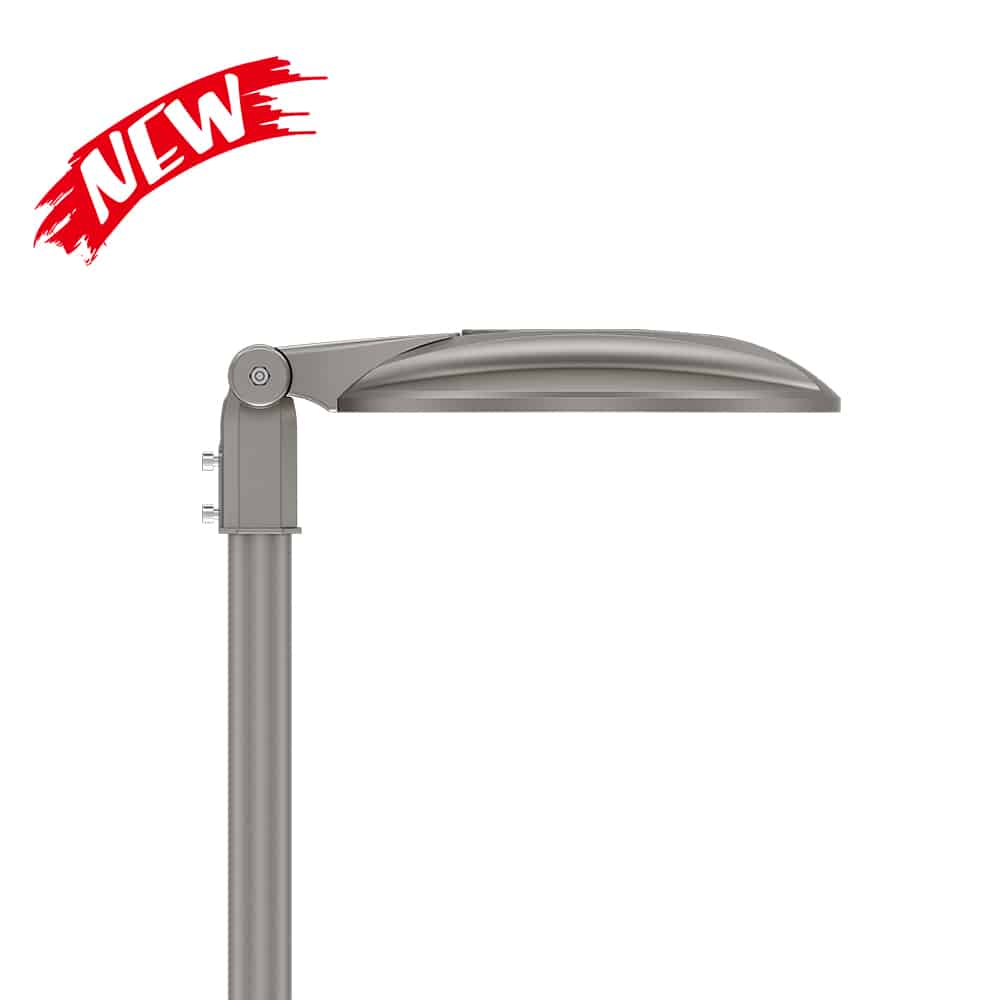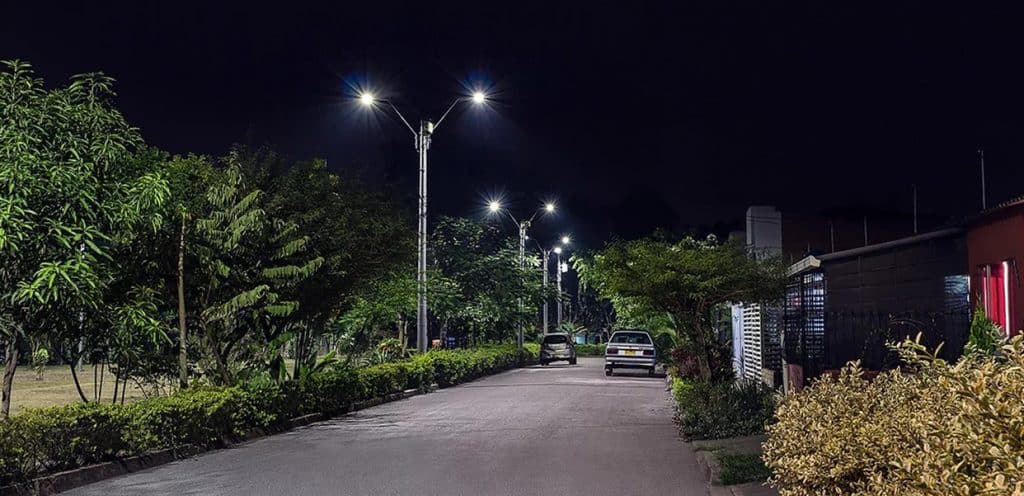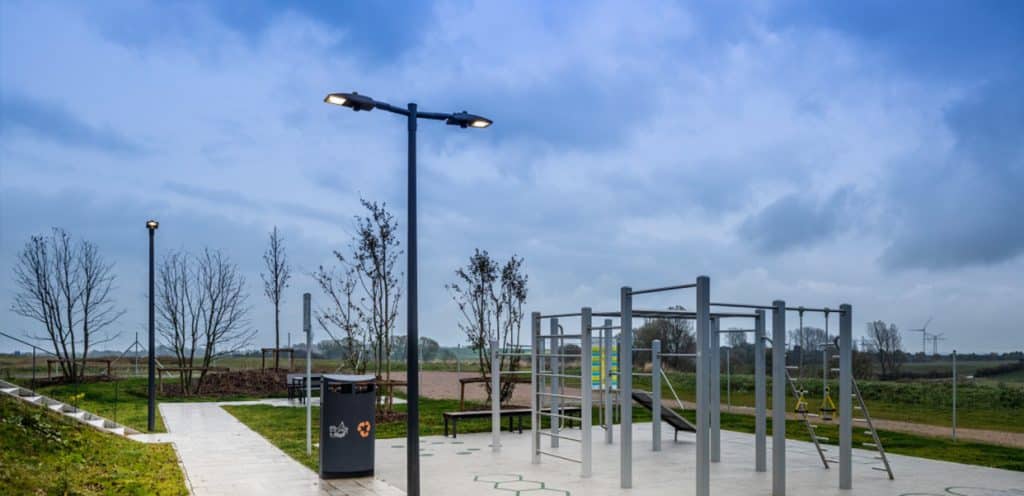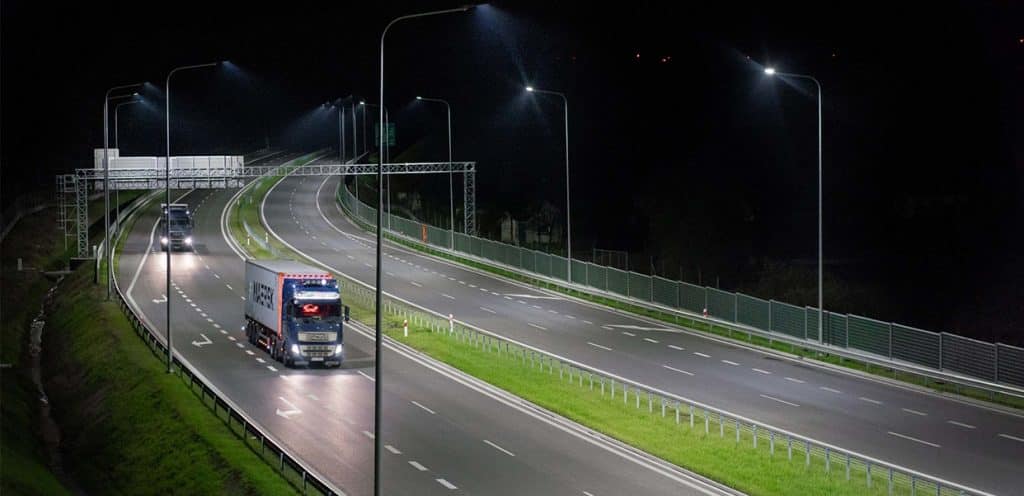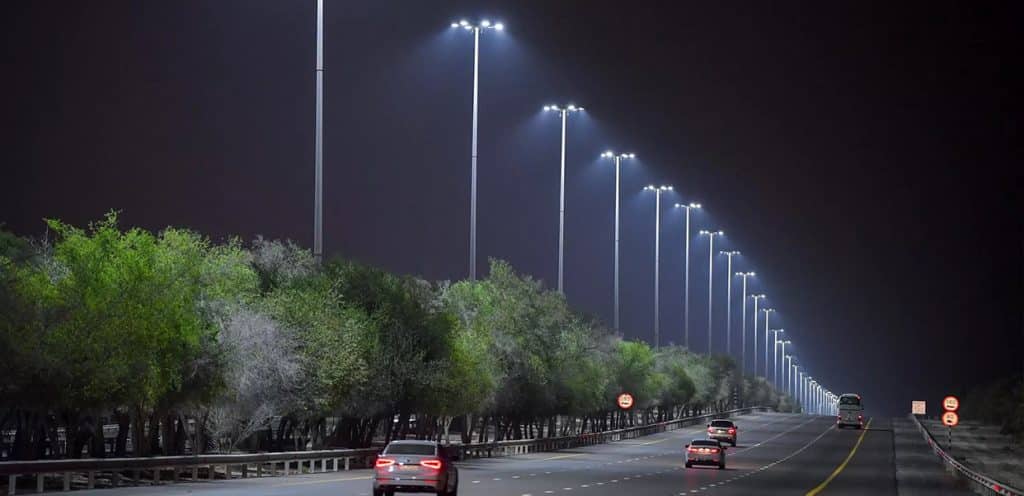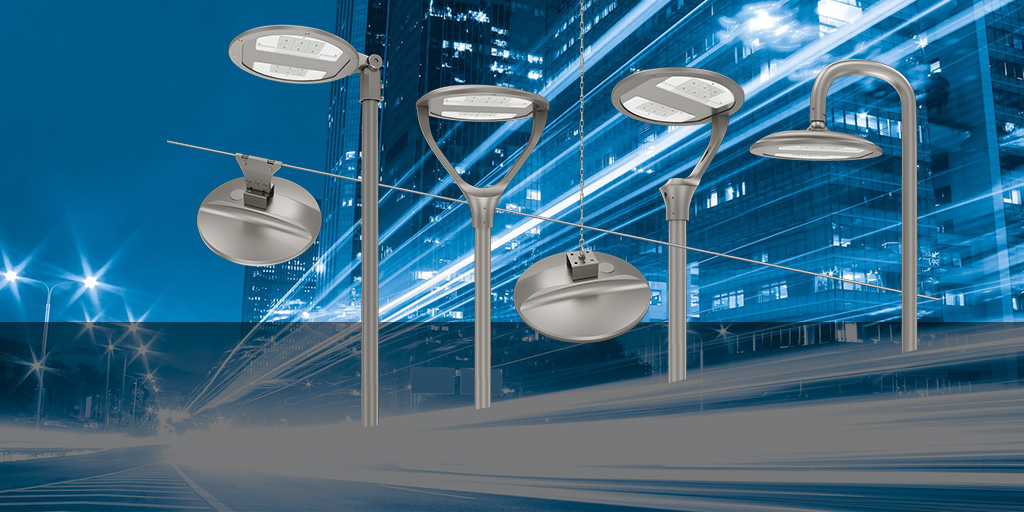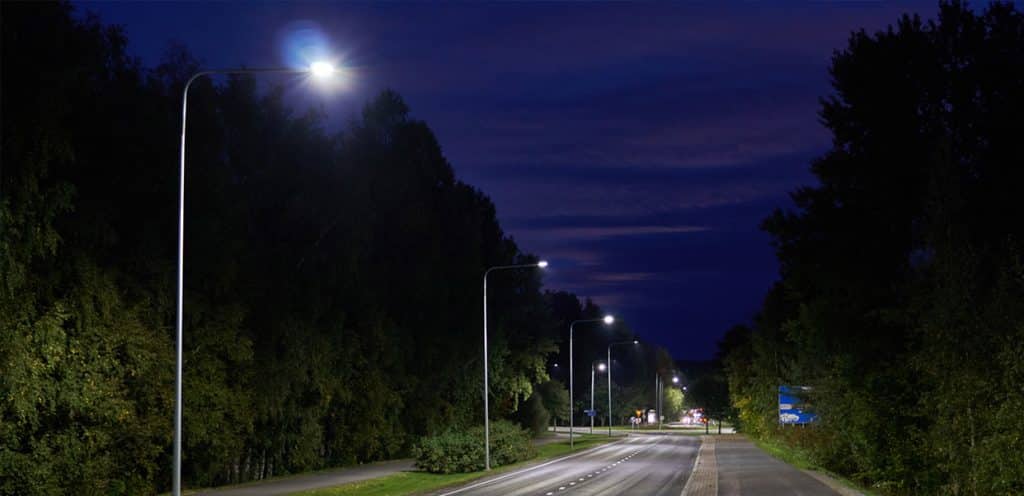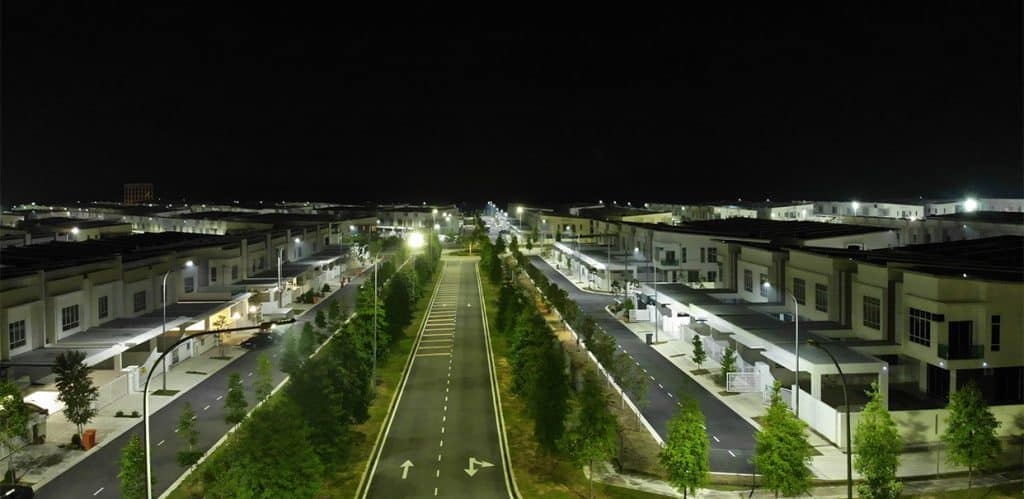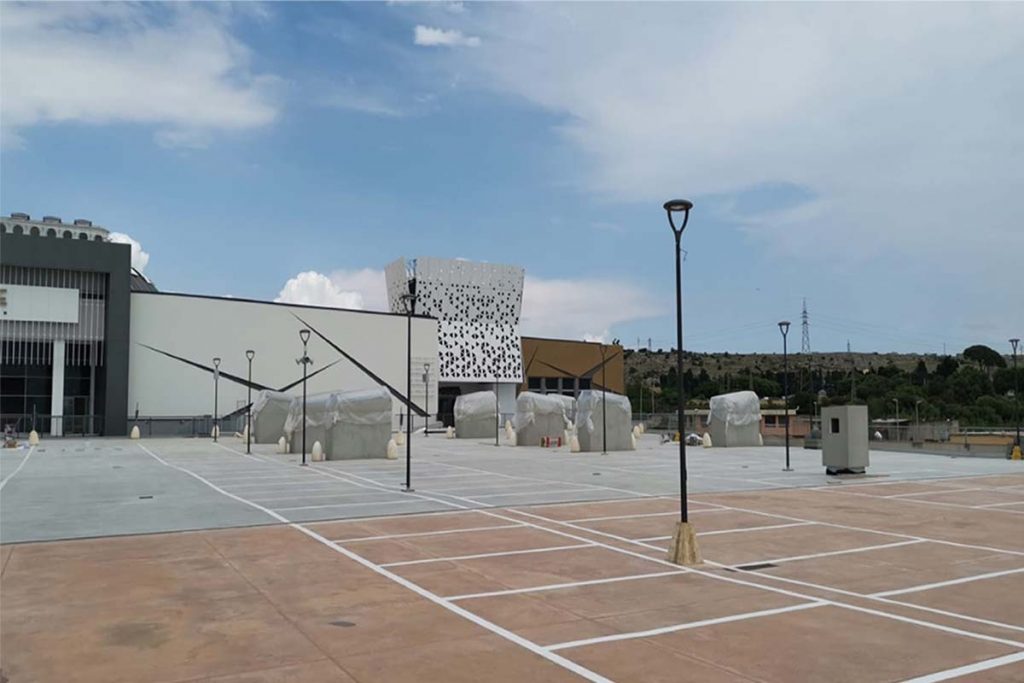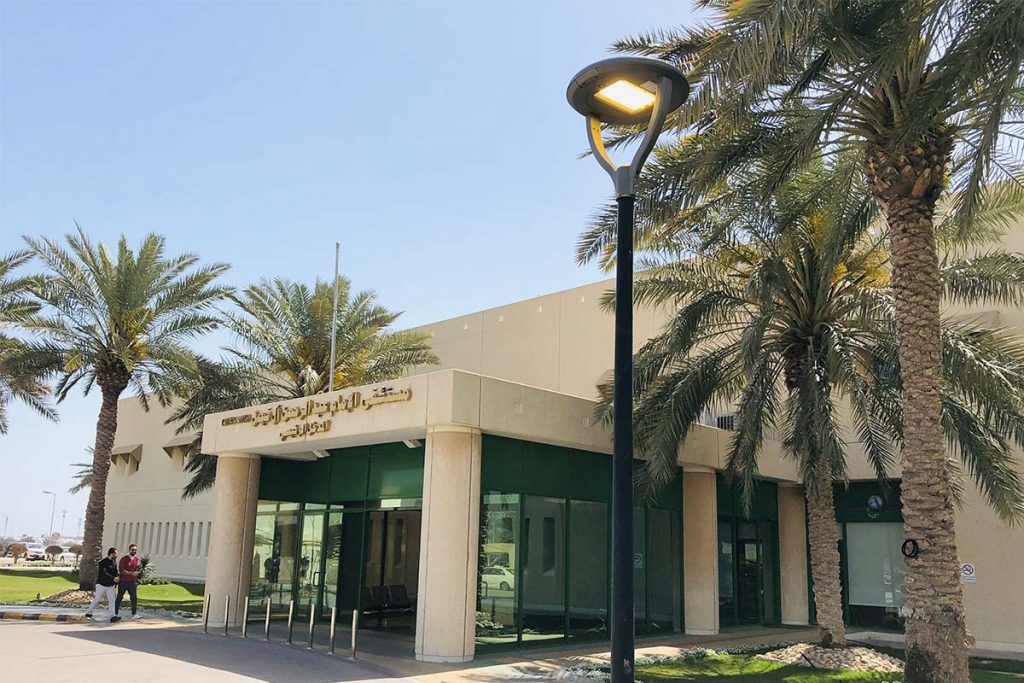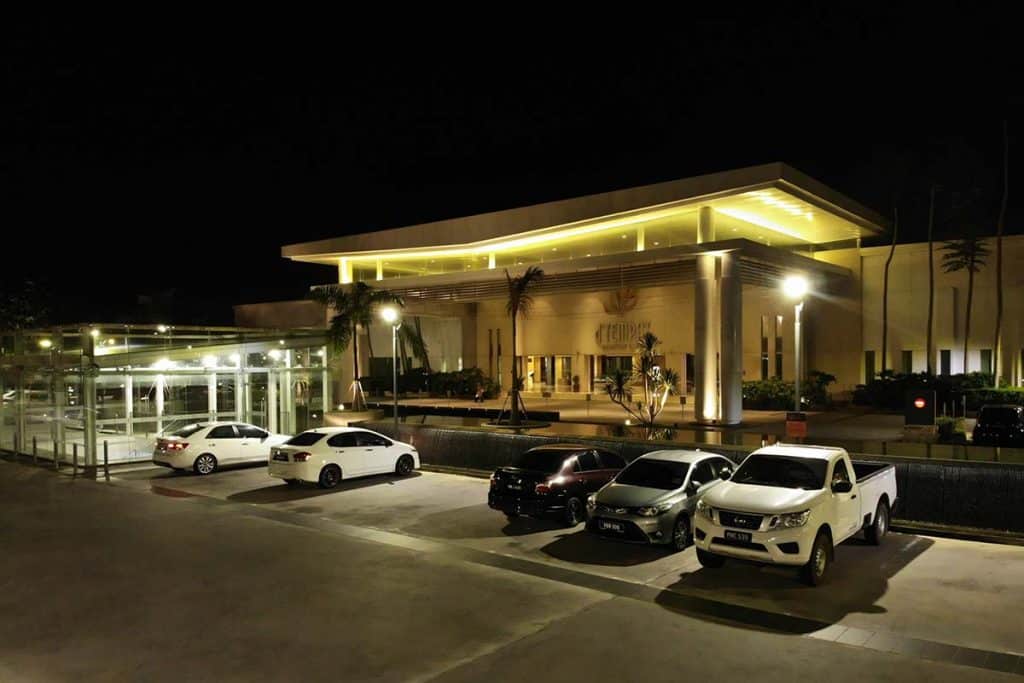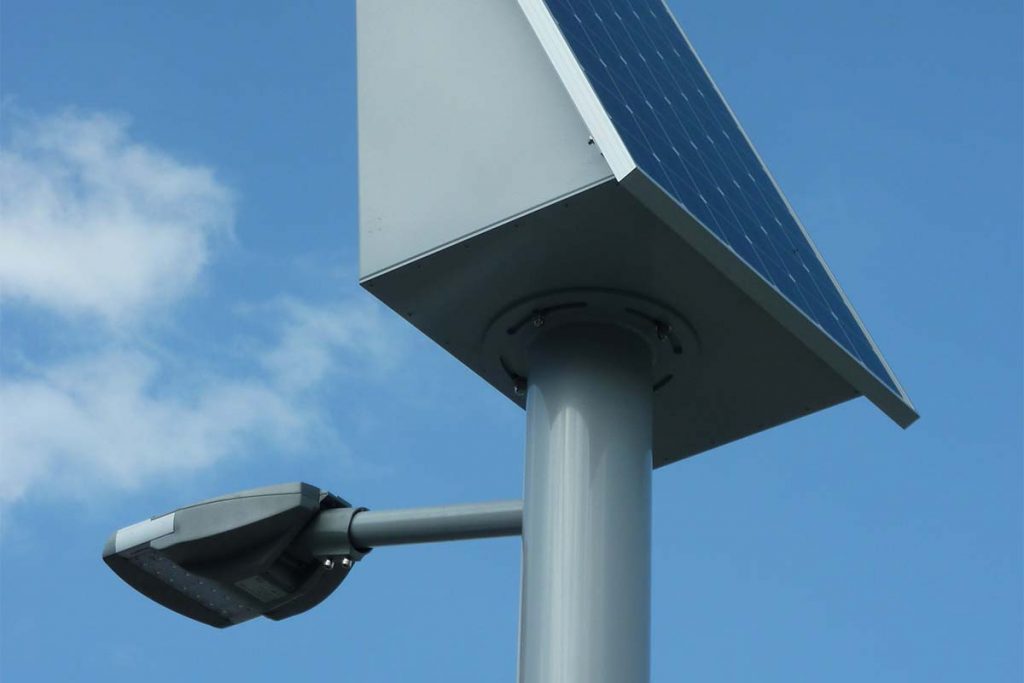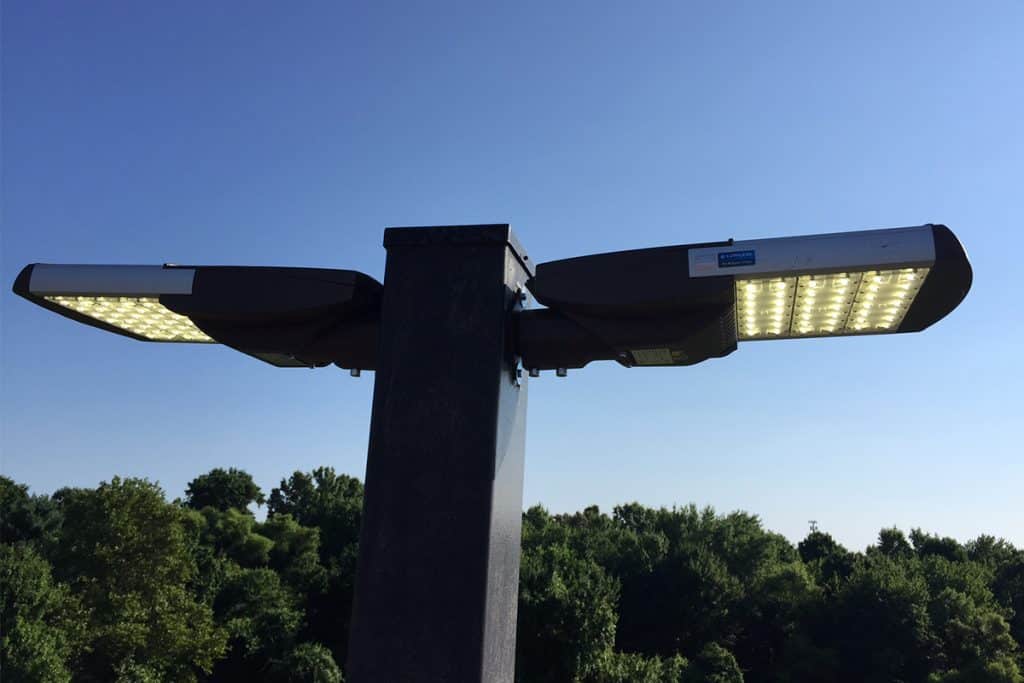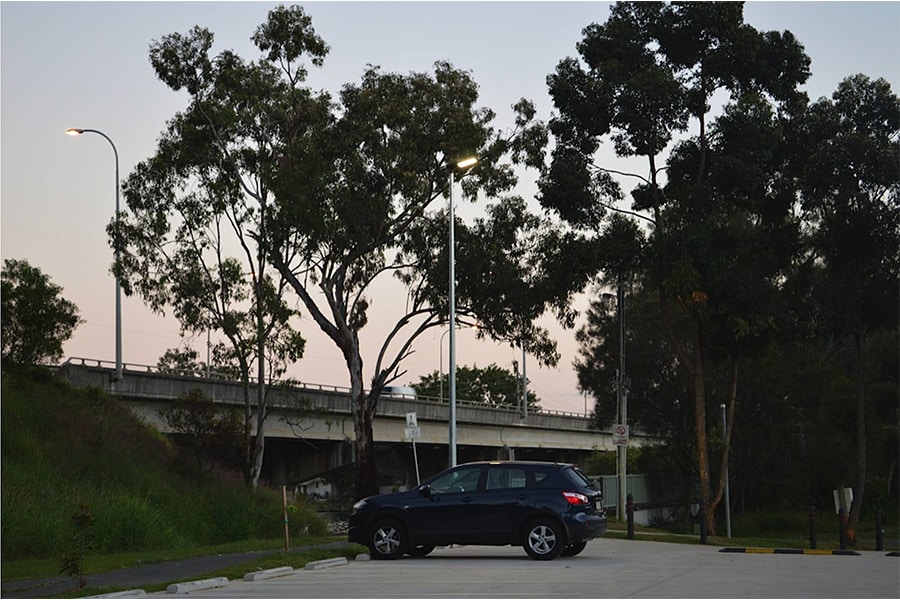Smart parking lot lighting control
Introduction
Parking lot lighting is a main part of exterior lighting. It helps people navigate from their car to nearby stores, and then find and return to their car. Parking lot lighting also contributes to safety and a sense of security. Typically an average illuminance level of 10 to 50 lux provides adequate visibility for parking lots and sidewalks. But poor lighting not only wastes energy, it can also make parking lot lighting harmful (it’s a big source of skyglow). Excessive lighting and an unreasonable lighting distribution (light shining into the sky) are two main reasons. The image below is a satellite photo at night, and many of the hotspots are the parking lots of plazas and shopping malls. Therefore, parking lot lighting needs more effective control. We will introduce the application of traditional light control, microwave induction, time control and wireless intelligent control in lighting control of parking lot. At the same time, we will put forward the advantages and disadvantages of each technology. Hope you all have a deeper understanding of parking lot lighting and smart parking lot lighting control.

Benefits of parking lot lighting control
Role of parking lot lighting
Guarantee the safety of property: Installing parking lot lighting can keep your business assets safe. If your company has an unlit parking lot, then it is more likely to attract unwanted attention from thieves and burglars. If there is sufficient lighting, it can reduce the robbery of property in the parking lot by criminals in the middle of the night.
Protect Pedestrians: Installing lighting in parking lots also improves pedestrian and customer safety. A brightly lit parking lot creates a safer environment for passers-by and local pedestrians ( Standard and requirements refers to pedestrian lighting ), whereas a dark parking lot not only causes traffic accidents, but also provides a hiding place for criminals and thieves. Additionally, parking lot lighting also creates a safer and more comfortable environment for employees who may be working late or leaving their cars in the parking lot.
Functions of the smart parking lot lighting control
Energy saving: The main function of parking lot lighting control is to adjust the output of lamps (reduce power), which can optimize energy consumption and save up to 50%-80% of energy costs.
Effective lighting: The lighting control of the parking lot can still ensure that the lighting system meets the lighting requirements of the parking lot while saving energy. At the same time, it should rise the output of parking lot lights when necessary.
Extended life: Since parking lot lighting does not need to work at full power all the time, this can reduce the accumulation of heat, and the LED itself has greater heat dissipation performance, which can greatly delay the service life of the parking lot lamps.
Intelligent control: The smart control of parking lot lighting is in line with the ultimate pursuit of lighting by modern people. They can set the lamps to work in the required state, and can switch between several states if needed. When the basic function of parking lot lighting is realized, other functions can also be achieved by smart parking lot lighting control. These functions include switching lights, dimming, data viewing and app control, etc.
Parking lot lighting with photocell
Photocells are an easy way to control LED parking lot lights. Lights on at dusk and off at sunrise. So parking lot light with photocell is also called parking lot light with dusk to dawn sensor. The main principle of a photocell is that it has a built-in photoresistor for collecting ambient light. When the ambient light brightness is lower than the threshold, the resistance of the photocell will be lower than a specific value. Then, the driving transistor is turned on(the relay is closed), and the parking lot light is turned on. On the contrary, the light fixture goes off. Photocells can be deployed in two ways. One approach is to install photocells on each parking lot light, much as municipalities install streetlights. Another way is to install a remote photocell on the line between the power supply and the parking lot lights ( Click here to view case studies of LED parking lot lights for commercial districts. ). Installed this way, all the lights can be turned on and off at the same time.
How do parking lot lights with photocell work

Advantages of parking lot lights with photocell
- Cheap price
- Available pre-installed or installed on the line by an electrician for ease of use
- The lamps are automatically turned on and off, no need to manually turn on
Disadvantages of parking lot lights with photocell
- Trees or buildings have an impact on the use of photovoltaic cells
- Photocell’s Dirty Lenses Cause Daytime Lights to Stay On
- When the light is not needed in the middle of the night, the lamps are still very bright to waste resources
Parking lot lighting with photocell and timer
Photocells and mechanical or electronic clocks are two easy ways to control LED parking lot lights. Combined, they’re an excellent way to control LED parking lot lights. The timer which mentioned here now normally built-in LED driver. It’s kind of an electric clock but it’s a little different from it. For example, the parking lot lights which is with photocell and timer will work as below way.
When the photocell turned on the parking lot lights on 16:00 and off on 7:00, it will be with 100% brightness at the beginning. From 16:00 to 22:00, it’s always in 100% output. But when 4 hours passed, it will changed to 50% brightness from 22:00 and last 8 hours to 6:00. Finally it will be 100% brightness from 6:00 to 7:00(last one hour).
This lighting control plan works well, and in many cases, it complies with stricter lighting regulations. Once it starts to get dark, photocells turn on the LED lights in the parking lot. Once it’s time to turn off the light, the photocell turns off the light. In the second half of the entire lighting process (midnight), the built-in clock will adjust the output of the lamps to ensure that the illuminance matches the flow of people and vehicles.
How do parking lot lights with photocell and timer work

Advantages of parking lot lights with photocell and timer
- The price is cheap, and the LED driver generally has a built-in time control function
- Easy to use, no need to manually turn on and off the lights and dimming
- Significantly reduces energy consumption
Disadvantages of parking lot lights with photocell and timer
- Dirty lenses of the light control can cause the lights to stay on during the day
- If there are people in the parking lot in the middle of the night, the light may not meet the requirements for use
- The control accuracy of the time control is not enough, because it is a timer rather than a real clock
Parking lot lighting with motion sensor
The motion sensor is a type of occupancy sensors that will turn on a light when it recognizes that someone is within range, and the light will stay on for a preset time. If the motion sensor persists, the time length will be adjusted back to the preset time. The light stays on, rather than off, for a preset amount of time after the person leaves. If no one is present during the motion sensor test during the holding time, the parking lot light will go off. As technology advances, more advanced motion sensors no longer simply turn off the lights completely, but dim them to a percentage of the maximum available light when no one is in the area after a preset time. This way, areas with reduced lighting are still illuminated for safety. This type of occupancy sensor is programmable, with preset times (holding time and stand-by time) and percentages of luminaire brightness can be set as desired.
How do parking lot lights with motion sensor work
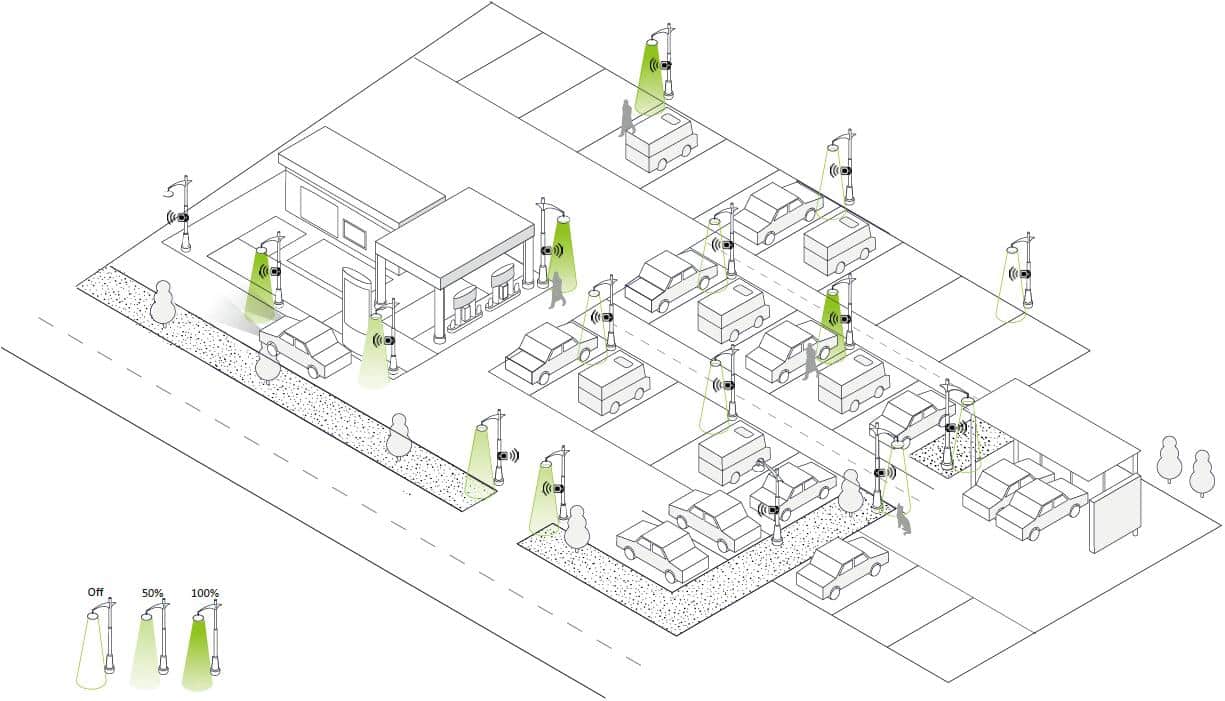
Advantages of parking lot lights with motion sensor
- Improving the energy efficiency of LED lamps
- Great flexibility to ensure lighting needs
- more friendly to the environment
Disadvantages of parking lot lights with motion sensor
- Additional expenses, usually the cost of motion sensor is higher than that of photocell
- More complicated initial installation and operation
- Added more failure points, based on our experience, the failure rate of parking lot with motion sensor is higher
Parking lot lighting with wireless control
When wireless parking lot control systems hit the market, expectations grew. Finally, there’s an advanced parking lot lighting control system that requires no fancy wiring. While wireless control has great potential and offers the most options and flexibility, the upfront cost of wireless control is the highest of any lighting control system.
Wireless control requires additional hardware to receive and transmit signals. The device is connected to the driver, and the driver must be compatible, which means compatible to transmit information which is able to accept dimming signals such as 0-10v or DALI. Once the parking lot lights are set, they all communicate with a central control unit. A wireless control system is deployed that handles basic functions like turning lights on, off, and dimming. At the same time the control unit can collect data and send alerts to administrators. For example, if a light fails, administrators will know immediately without having to send employees to walk around the facility looking for a light that is out of order. At the same time, we can set different lighting schemes according to the lighting scene to meet the lighting needs of different scenes. Find ZGSM smart parking lot lighting project here.
How do parking lot lights with motion sensor work
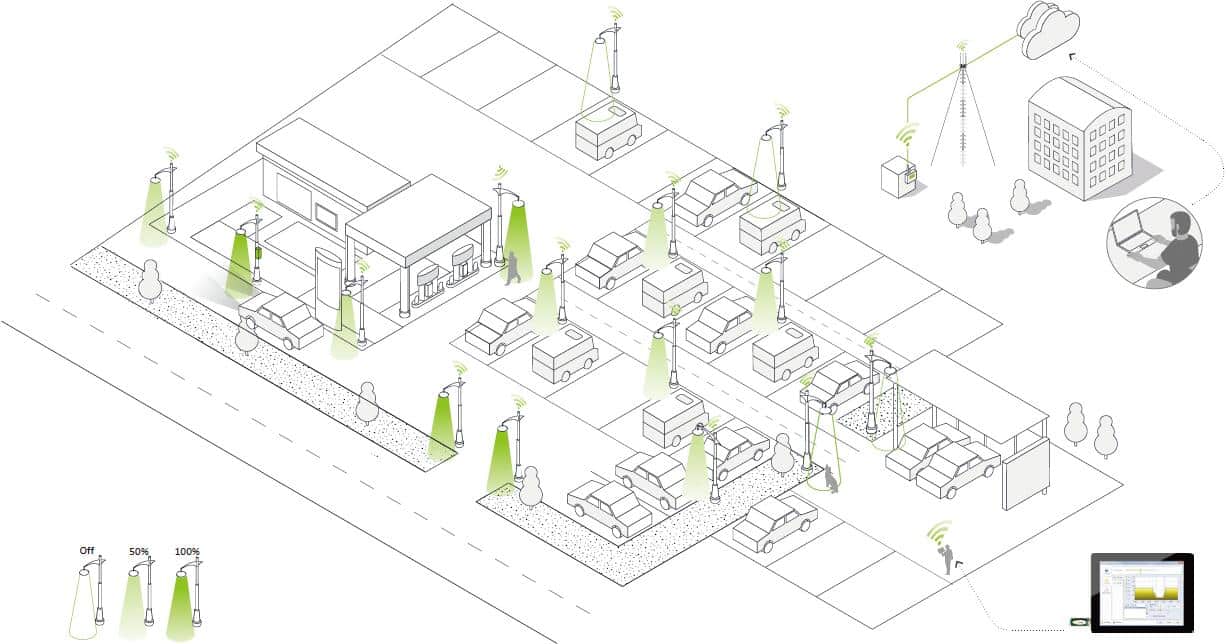
Advantages of parking lot lights with wireless control
- Improving the energy efficiency of LED lamps
- Meet the needs of real-time monitoring
- The system is smart, modern, wirelessly wired
- Various scenarios, flexible switching
Disadvantages of parking lot lights with wireless control
- LED luminaires and controllers are expensive and expensive to deploy
- Installation and operation are complex and require a period of learning
- If real-time control is required, professional personnel are required, and the labor cost in the later stage is also high
Summary
Parking lot lighting is very necessary, but we can’t think that the higher the illumination, the better, and the longer the lighting duration, the better. This is because unreasonable parking lot lighting not only wastes resources, but also may cause light pollution. The above-mentioned parking lot lighting control methods have their own advantages and disadvantages. Since each lighting control method has advantages and disadvantages, ZGSM believes that these parking lot lighting control methods can be selected according to the needs of the installation project. For example, we prefer cheap and relatively energy-saving methods. We think that parking lot lights with photocell and timer is the best. If the budget is very limited, you can only choose the plan of parking lot lights with timer. The solution of parking lot lights with motion sensor, we think it is suitable for the parking lot or square needs certain lighting, but the number of users is less in most cases. Parking lot lights with wireless control, we think it is suitable for those who have a sufficient budget, are willing to learn new technologies and want to set different parking lot lighting methods for different scenarios.
Rated Products
Related Blogs
Related Cases
People also ask
Author introduction

Hello Customers,
My name is Taylor Gong, I’m the product manager of ZGSM Tech. I have been in the LED lights industry for more than 13 years. Good at lighting design, street light system configuration, and bidding technology support. Feel free to contact us. I’m happy to provide you with the best service and products.
Email: [email protected] | WhatsApp: +8615068758483

